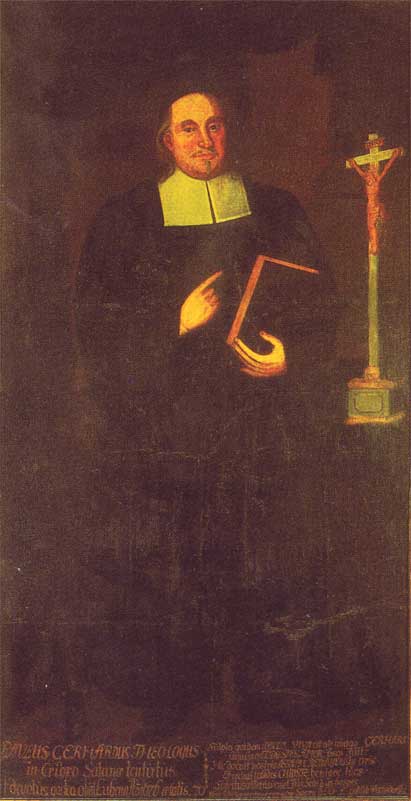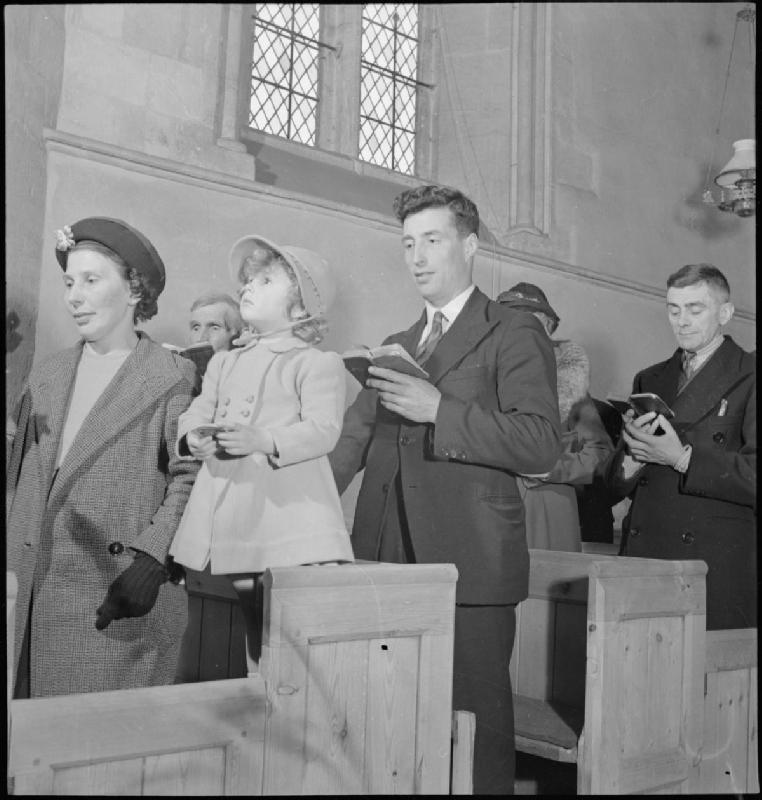|
Ich Singe Dir Mit Herz Und Mund
"Ich singe dir mit Herz und Mund" (I sing to you with heart and mouth) is a hymn with a text by Paul Gerhardt. It was first published in 1653 in the 5th edition of Johann Crüger's hymnal ''Praxis pietatis melica ''Praxis pietatis melica'' (''Practice of Piety in Song'') is a Protestant hymnal first published in the 17th century by Johann Crüger. The hymnal, which appeared under this title from 1647 to 1737 in 45 editions, has been described as "the most ...''. In the current Protestant hymnal, '' Evangelisches Gesangbuch'', it appears as EG 324. A first translation to English, "O Lord! I sing with mouth and heart", appeared in 1867 in J. Kelly's P.G's Spiritual Songs on page 255. References Bibliography * (ed.), ''Ich singe dir mit Herz und Mund. Liedauslegungen – Liedmeditationen – Liedpredigten. Ein Arbeitsbuch zum Evangelischen Gesangbuch'', Stuttgart 1997, * Thost, Karl Christian, ''Bibliographie über die Lieder des Evangelischen Gesangbuchs'', Göttingen 200 ... [...More Info...] [...Related Items...] OR: [Wikipedia] [Google] [Baidu] |
Hymn
A hymn is a type of song, and partially synonymous with devotional song, specifically written for the purpose of adoration or prayer, and typically addressed to a deity or deities, or to a prominent figure or personification. The word ''hymn'' derives from Greek (''hymnos''), which means "a song of praise". A writer of hymns is known as a hymnist. The singing or composition of hymns is called hymnody. Collections of hymns are known as hymnals or hymn books. Hymns may or may not include instrumental accompaniment. Although most familiar to speakers of English in the context of Christianity, hymns are also a fixture of other world religions, especially on the Indian subcontinent (''stotras''). Hymns also survive from antiquity, especially from Egyptian and Greek cultures. Some of the oldest surviving examples of notated music are hymns with Greek texts. Origins Ancient Eastern hymns include the Egyptian ''Great Hymn to the Aten'', composed by Pharaoh Akhenaten; the Hurrian ''Hy ... [...More Info...] [...Related Items...] OR: [Wikipedia] [Google] [Baidu] |
Paul Gerhardt
Paul Gerhardt (12 March 1607 – 27 May 1676) was a German theologian, Lutheran minister and hymnodist. Biography Gerhardt was born into a middle-class family at Gräfenhainichen, a small town between Halle and Wittenberg. His father died in 1619, his mother in 1621. At the age of fifteen, he entered the Fürstenschule in Grimma. The school was known for its pious atmosphere and stern discipline. The school almost closed in 1626 when the plague came to Grimma, but Paul remained and graduated from there in 1627. In January 1628 he enrolled in the University of Wittenberg. There, two teachers in particular had an influence on him: Paul Röber and Jacob Martini. Both of these men were staunch Lutherans, promoting its teachings not only in the classroom but in sermons and hymns. Röber in particular often took his sermon texts from hymns. In this way Gerhardt was taught the use of hymnody as a tool of pastoral care and instruction. Gerhardt graduated from the University of Witt ... [...More Info...] [...Related Items...] OR: [Wikipedia] [Google] [Baidu] |
Hymn
A hymn is a type of song, and partially synonymous with devotional song, specifically written for the purpose of adoration or prayer, and typically addressed to a deity or deities, or to a prominent figure or personification. The word ''hymn'' derives from Greek (''hymnos''), which means "a song of praise". A writer of hymns is known as a hymnist. The singing or composition of hymns is called hymnody. Collections of hymns are known as hymnals or hymn books. Hymns may or may not include instrumental accompaniment. Although most familiar to speakers of English in the context of Christianity, hymns are also a fixture of other world religions, especially on the Indian subcontinent (''stotras''). Hymns also survive from antiquity, especially from Egyptian and Greek cultures. Some of the oldest surviving examples of notated music are hymns with Greek texts. Origins Ancient Eastern hymns include the Egyptian ''Great Hymn to the Aten'', composed by Pharaoh Akhenaten; the Hurrian ''Hy ... [...More Info...] [...Related Items...] OR: [Wikipedia] [Google] [Baidu] |
Johann Crüger
Johann Crüger (9 April 1598 – 23 February 1662) was a German composer of well-known hymns. He was also the editor of the most widely used Lutheran hymnal of the 17th century, ''Praxis pietatis melica''. Early life and education Crüger was born in Groß Breesen (now part of Guben) as the son of an innkeeper, Georg Crüger.Nummert, Dietrich"Mit 24 schon Musikdirektor. Kantor und Lehrer Johann Crüger" ''Berlinische Monatsschrift'', pp. 64–68 (April 1998) He was an ethnic Sorb, baptized as Jan Krygar.Zersen, David and Mellenbruch, Eric. “Najwuznamn-niši němski kěrlušer poreforma-ciskeje doby bě Serb”, Serbsky protyka, pp. 53–56 (2018) (In Sorbian) He studied at the nearby Lateinschule (then located in Guben) until 1613, and that school's teaching program included music and singing. He then traveled to Sorau and Breslau for further education, and finally to Regensburg, where he received musical training from Paulus Homberger (1560–1634). In 1615 he traveled to ... [...More Info...] [...Related Items...] OR: [Wikipedia] [Google] [Baidu] |
Praxis Pietatis Melica
''Praxis pietatis melica'' (''Practice of Piety in Song'') is a Protestant hymnal first published in the 17th century by Johann Crüger. The hymnal, which appeared under this title from 1647 to 1737 in 45 editions, has been described as "the most successful and widely-known Lutheran hymnal of the 17th century". Crüger composed melodies to texts that were published in the hymnal and are still sung today, including "Jesu, meine Freude", "Herzliebster Jesu", and "Nun danket alle Gott". Between 1647 and 1661, Crüger first printed 90 songs by his friend Paul Gerhardt, including "O Haupt voll Blut und Wunden". Purpose The volume of hymns was intended for use in both church and private services. The explanation of the Latin title was given from the very first publication in 1647: "Das ist: Vbung der Gottseligkeit in Christlichen und Trostreichen Gesängen" (That is: practice of Godliness in Christian and comforting chants). The subtitle continued: "Herrn D. Martini Lutheri fürnemlich ... [...More Info...] [...Related Items...] OR: [Wikipedia] [Google] [Baidu] |
1653 Works
Events January–March * January 3 – By the Coonan Cross Oath, the Eastern Church in India cuts itself off from colonial Portuguese tutelage. * January– The Swiss Peasant War begins after magistrates meeting at Lucerne refuse to hear from a group of peasants who have been financially hurt by the devaluation of the currency issued from Bern. * February 2 – New Amsterdam (later renamed New York City) is incorporated. * February 3 – Cardinal Mazarin returns to Paris from exile. * February 10 – Swiss peasant war of 1653: Peasants from the Entlebuch valley in Switzerland assemble at Heiligkreuz to organize a plan to suspend all tax payments to the authorities in the canton of Lucerne, after having been snubbed at a magisterial meeting in Lucerne. More communities in the canton join in an alliance concluded at Wolhusen on February 26. * February – The Morning Star Rebellion (''Morgonstjärneupproret'') of peasants breaks out i ... [...More Info...] [...Related Items...] OR: [Wikipedia] [Google] [Baidu] |
17th-century Hymns In German
The 17th century lasted from January 1, 1601 ( MDCI), to December 31, 1700 ( MDCC). It falls into the early modern period of Europe and in that continent (whose impact on the world was increasing) was characterized by the Baroque cultural movement, the latter part of the Spanish Golden Age, the Dutch Golden Age, the French ''Grand Siècle'' dominated by Louis XIV, the Scientific Revolution, the world's first public company and megacorporation known as the Dutch East India Company, and according to some historians, the General Crisis. From the mid-17th century, European politics were increasingly dominated by the Kingdom of France of Louis XIV, where royal power was solidified domestically in the civil war of the Fronde. The semi-feudal territorial French nobility was weakened and subjugated to the power of an absolute monarchy through the reinvention of the Palace of Versailles from a hunting lodge to a gilded prison, in which a greatly expanded royal court could be more easily k ... [...More Info...] [...Related Items...] OR: [Wikipedia] [Google] [Baidu] |
Lutheran Hymns
Lutheranism is one of the largest branches of Protestantism, identifying primarily with the theology of Martin Luther, the 16th-century German monk and reformer whose efforts to reform the theology and practice of the Catholic Church launched the Protestant Reformation. The reaction of the government and church authorities to the international spread of his writings, beginning with the ''Ninety-five Theses'', divided Western Christianity. During the Reformation, Lutheranism became the state religion of numerous states of northern Europe, especially in northern Germany, Scandinavia and the then-Livonian Order. Lutheran clergy became civil servants and the Lutheran churches became part of the state. The split between the Lutherans and the Roman Catholics was made public and clear with the 1521 Edict of Worms: the edicts of the Diet condemned Luther and officially banned citizens of the Holy Roman Empire from defending or propagating his ideas, subjecting advocates of Lutheranism to ... [...More Info...] [...Related Items...] OR: [Wikipedia] [Google] [Baidu] |






.jpg)